Part 1: Introduction
Part 2: The right equipment
Part 3: The happy photo shoot
Part 4: From baby bump to teenager
Part 5: Taking photos indoors
Part 6: Outdoor photos
Part 7: Family life
Part 8: Tips and tricks (I)
Mastering the technique
Be flexible
Snapshots
Please do not disturb
Series
Color harmonies
"Set design"
Part 9: Tips and tricks (II)
Part 10: Archiving, editing and presenting children's photos
Text: Jens Brüggemann
Photos by: Jens Brüggemann (147), Leonie Ebbert (44), Elli Bezensek (61), Radmila Kerl (26), Ramona Prosch (5) and Kay Johannsen (4)
Sketches: Jens Brüggemann (27)
Part 8: Tips and tricks (I)
In the following I have compiled a collection of important tips which, if followed, may not automatically guarantee good photos - but which, if not followed, are guaranteed to lead to less good photos!
These are all tips and tricks from photography practice that I have acquired over the course of 12 years of self-employment as a commercial photographer.
I'm sure you'll find as you read that you've already noticed one or two of these points at one or two photo shoots; just remember that it takes more than a great camera to take outstanding photos of children. More important than the technology is the person who uses it.
And the human child being photographed.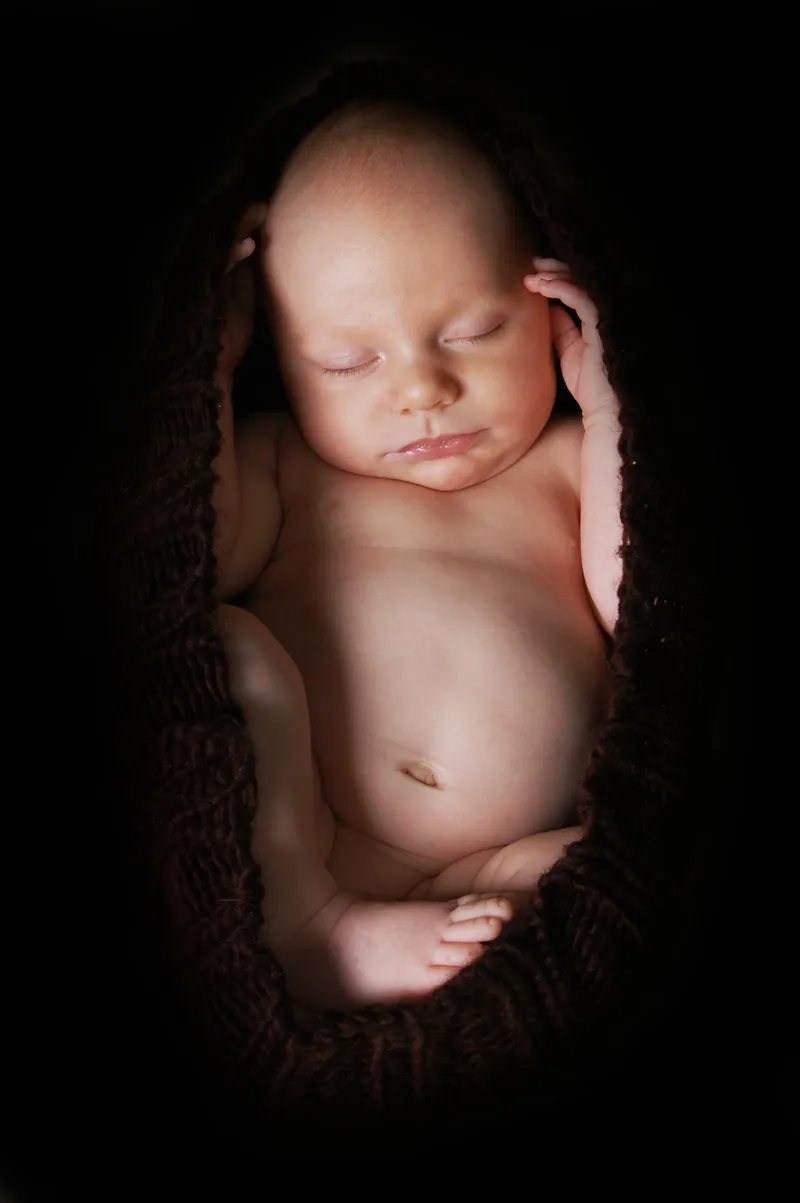
(Photo: Leonie Ebbert)
Mastering the technique
Nevertheless, you should of course also master your newly purchased camera "blindly", so to speak, before you dare to take your first photos of children! Children are not very patient, and if you have to spend a long time going through the camera menu to either find a certain camera setting or, even worse, undo it while your young model is waiting, they will quickly lose interest. And may even be reluctant to model for you in the future. (Photo: Jens Brüggemann)
Trying out the technique for non-posed shots, snapshots of the little ones so to speak, can also be frustrating if, for example, the youngster does or achieves something really great (e.g. stands upright for the first time) and you "mess up" this crucial moment because you haven't yet mastered the camera sufficiently ...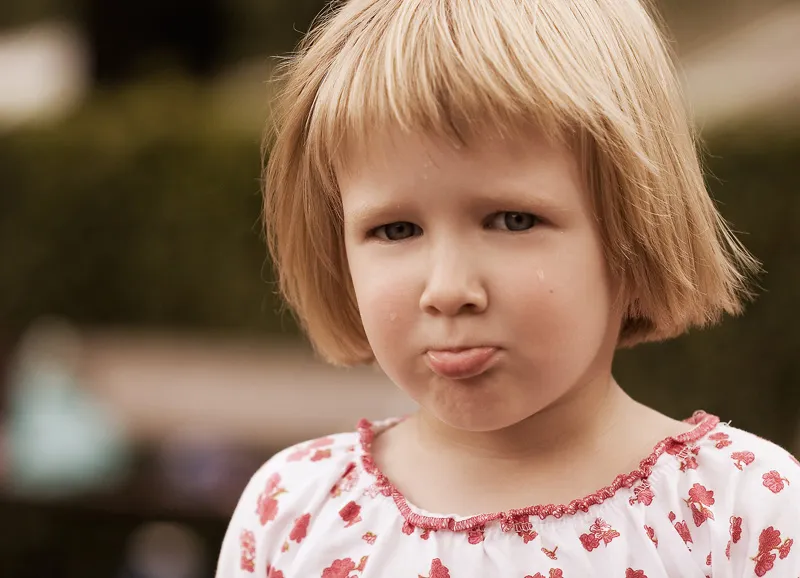
(Photo: Ramona Prosch)
Instead, it is better to try out your new camera by photographing objects, landscapes, etc. until you are "fit" enough to photograph living models, whether large or small.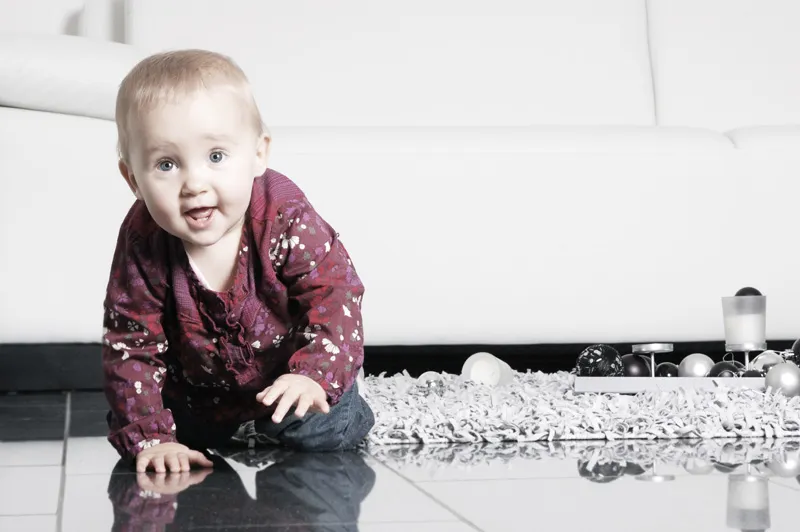
(Photo: Leonie Ebbert)
Be flexible
Be flexible! The conditions are not always ideal - but don't throw in the towel (your camera) just yet! You can take good photos of children even under "bad" conditions!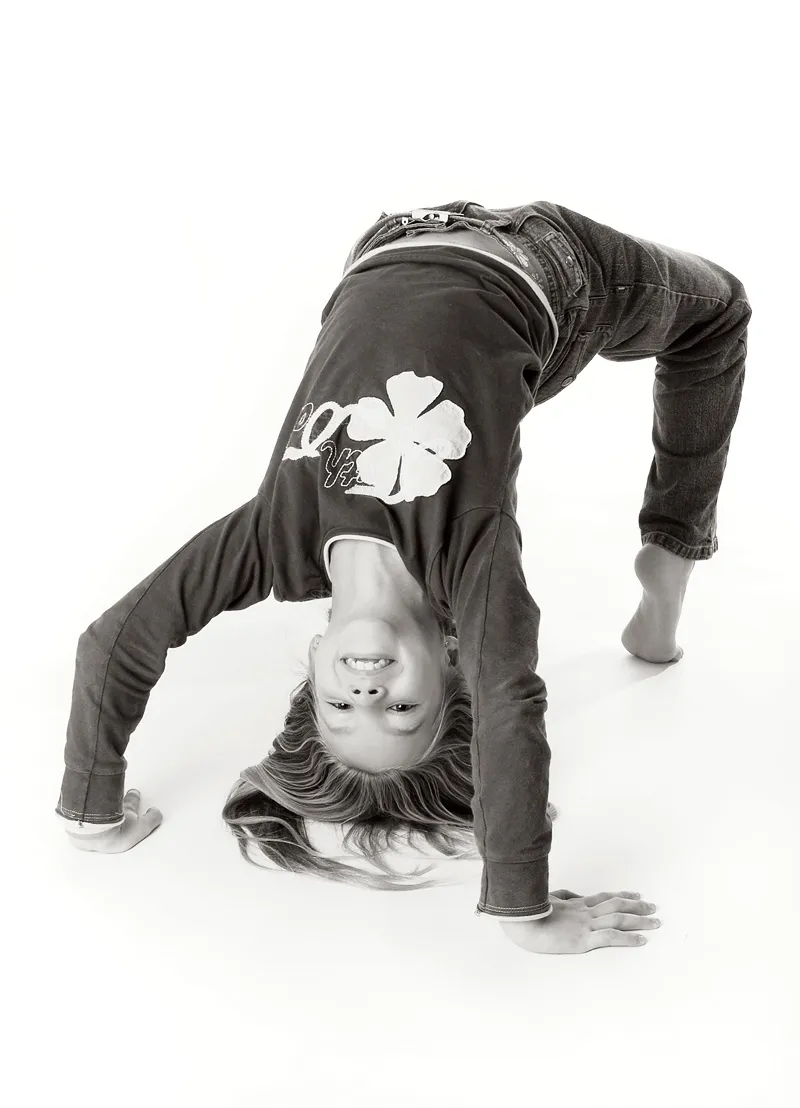
(Photo: Ramona Prosch)
It's not uncommon to be disappointed because the conditions are different than expected. People are quick to interpret "different" as "worse". For example, it's raining even though the weather forecast had predicted sunshine once again. Or the sports hall where you are supposed to photograph the little ones playing soccer is much darker than expected, so you have to use a flash instead of available light.
Or the space available for the shots is smaller than expected, so you can't realize your composition at all and have to choose a tight framing. Or the child model doesn't stay still in the intended place, but prefers to play with a pinball machine...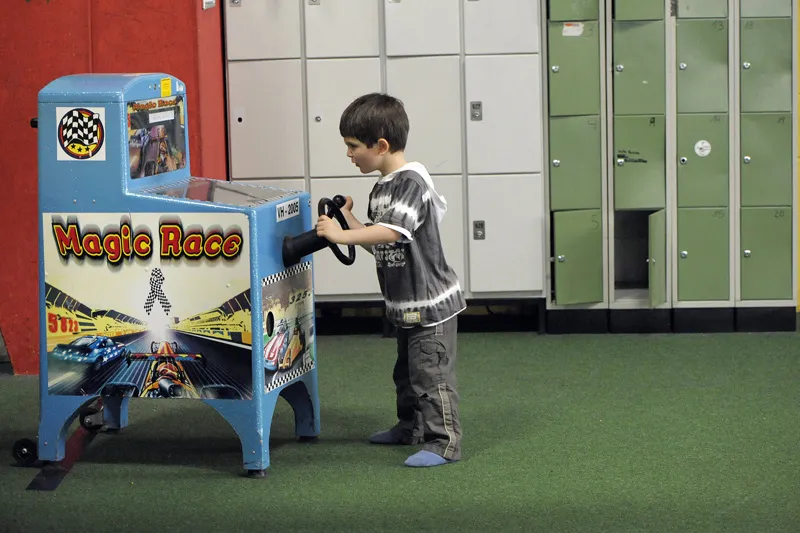
(Photo: Jens Brüggemann)
Or, or, or. There are a thousand reasons why you can be disappointed if the general conditions are different than expected. Just make the best of it! Try to turn the alleged disadvantage into an advantage! As a commercial photographer, you constantly have to live with changing conditions, so the first thing you learn as a freelance photographer is to be flexible. And quite often it was precisely the restriction that forced me to rethink the image idea, which in retrospect turned out to be much better than my original idea ...
Snapshots
The right moment
Hitting the "right", or better: decisive moment, is the fine art of children's photography. A picture can say more than a thousand words, but the problem is catching that moment, i.e. seeing it, then having the camera ready to shoot almost at the same time, and finally pulling the trigger as quickly as possible!
(Photo: Radmila Kerl)
This clearly shows that snapshots place the highest demands on people and technology: Only those who react quickly and choose the right framing and exposure in the shortest possible time will not miss the decisive moment. And only a camera that is ready to shoot quickly will help to capture this moment. This includes the shortest possible shutter release delay (such as the Nikon D3: 0.037 seconds) and a fast switch-on time (ready to shoot; Nikon D3: 0.12 seconds).
Of course, it is advantageous if you have already switched on the camera because you perhaps wanted to take a photo of your offspring anyway. In the following photo, I was just about to take a portrait of my son when he knocked over the phone and all I had to do was quickly press the shutter button. I didn't have enough time to correct the framing. And afterwards, I didn't want to destroy the snapshot character of the photo by correcting the cropping in Photoshop (I left too much "air" at the top of the photo, so I could cut off almost a third of the top of the photo).
(Photo: Jens Brüggemann)
If you watch your own or other people's children playing with the camera, all you really have to do - ready to shoot, of course - is wait. Many great situations arise "automatically" that are worth capturing.
Which camera setting is chosen depends on the shooting conditions on location and the photographer's personal taste or preferred way of working. It makes sense to use automatic exposure. Program automatic is certainly a good choice for rapidly changing conditions.
If the shooting conditions do not change or change only slowly, I prefer to work with automatic aperture priority, where the aperture (as a creative means for the sharpness/blur distribution of the photo) is preset by the photographer and the shutter speed is automatically selected by the camera depending on the selected aperture and the prevailing ambient brightness.
For fast-moving objects (and children, when they are running wild, are one of them!), the automatic aperture control can also be used: The photographer selects the fastest possible shutter speed, while the camera determines the appropriate Blender to achieve the correct exposure for the photo.
A higher ISO value than the standard value is generally recommended, unless you are taking photos outdoors in sufficiently bright conditions, such as on vacation at the seaside.
My son was only four and a half years old in 2008 when he bravely faced the huge waves on the beach in Cabo Verde. He couldn't swim back then, but seemed to be more fearless than most adults.
The other vacationers were amazed at how the little toddler first "scolded" the waves loudly and angrily, then was knocked over by a large one, only to be fished out by my wife and brought back to land. After spitting out the salt water and taking several deep breaths, he then started the tiring game again, while I lay in wait with my compact camera at the time (Canon G9 with program automatic setting) ready to shoot the next "action photo" of my son fighting against the forces of nature.
Of course, my wife was in close proximity to my son at all times so that she could rescue him quickly in an emergency. This was also the reason why I had to crop the photo in Photoshop, as otherwise my wife would have been visible at the edge of the picture.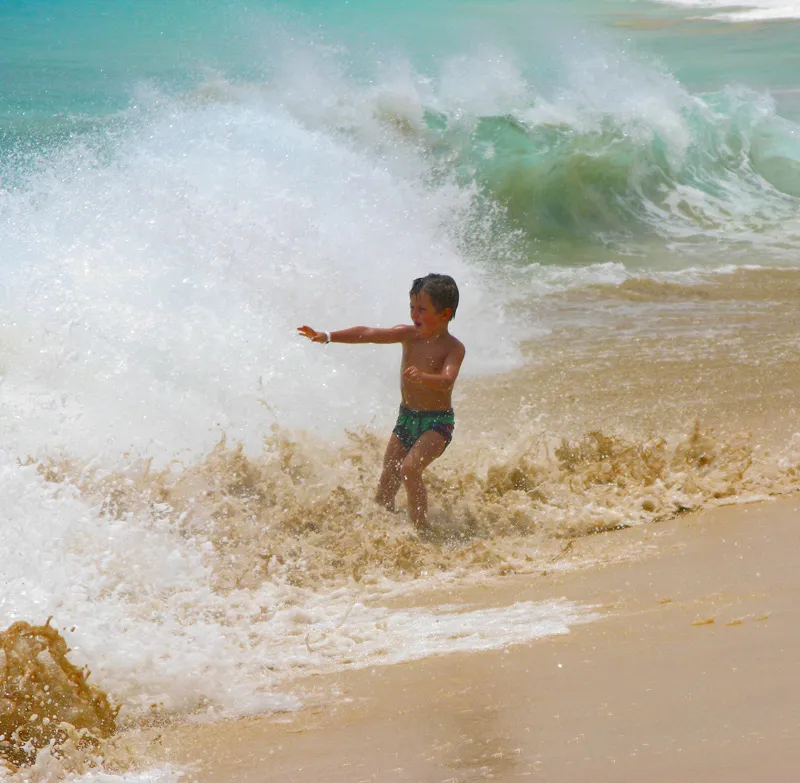
(Photo: Jens Brüggemann)
Please do not disturb
You shouldn't wake sleeping children! Never! Because then they are unhappy and fussy or even start to cry.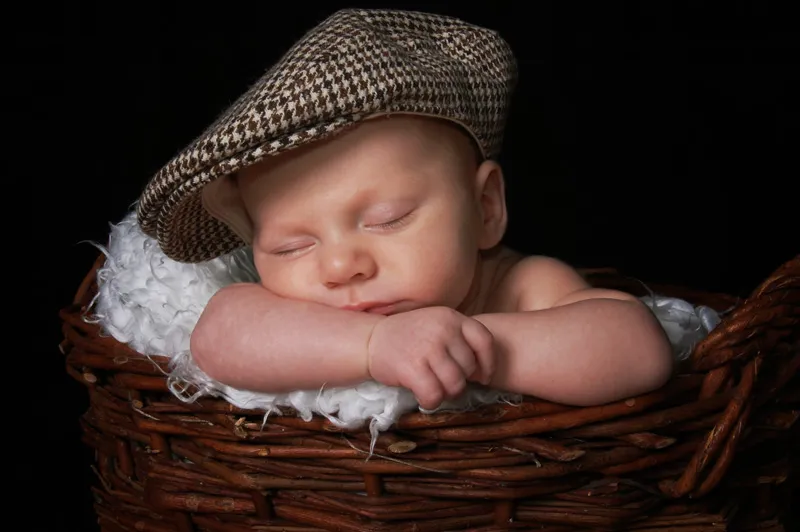
(Photo: Leonie Ebbert)
Not exactly the ideal moment for a few "beautiful" children's portraits ...
(Photo: Leonie Ebbert)
It's better to wait and see or, if necessary, take a few photos of the sleeping child, who lies there like an angel and seems to be dreaming contentedly. "No child is so good that its mother is not happy when it finally sleeps." (Ralph Waldo Emerson)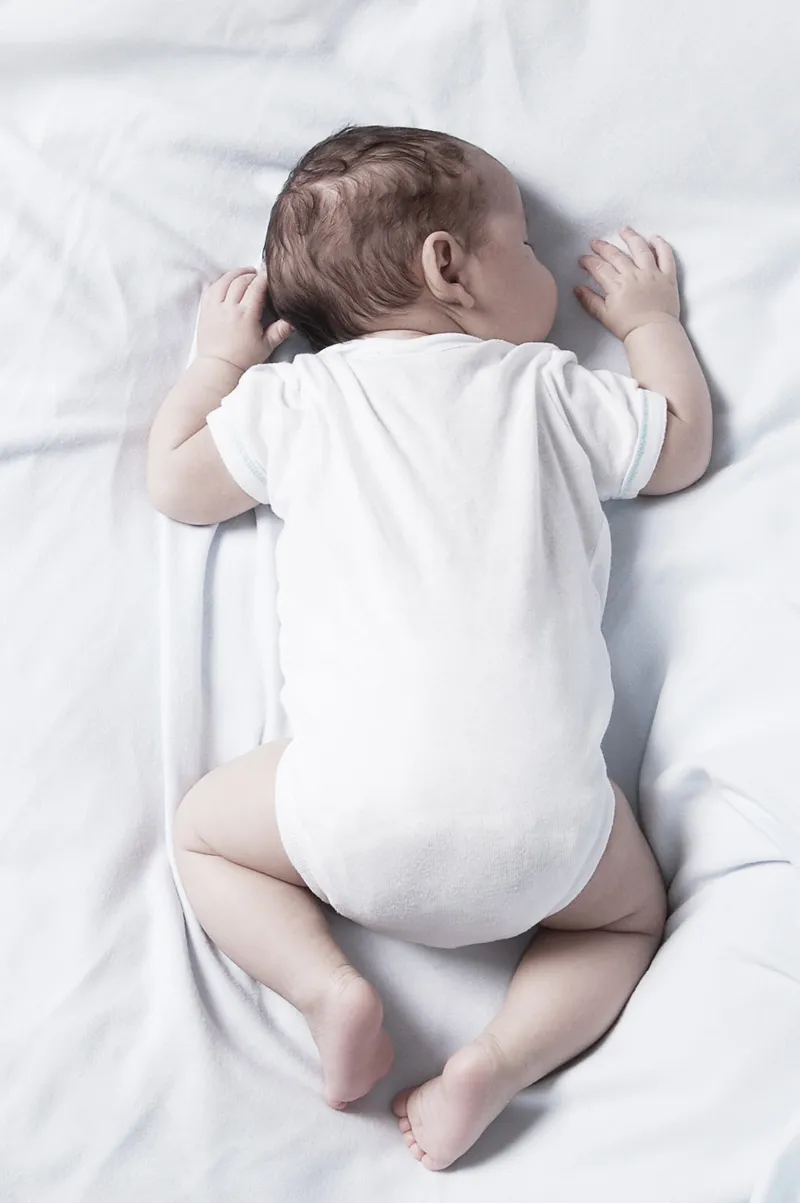
(Photo: Leonie Ebbert)
And at some point, the little ones are also well rested, they wake up on their own and look at you all rested and refreshed, content and happy. That 's the moment when you should definitely pull the trigger!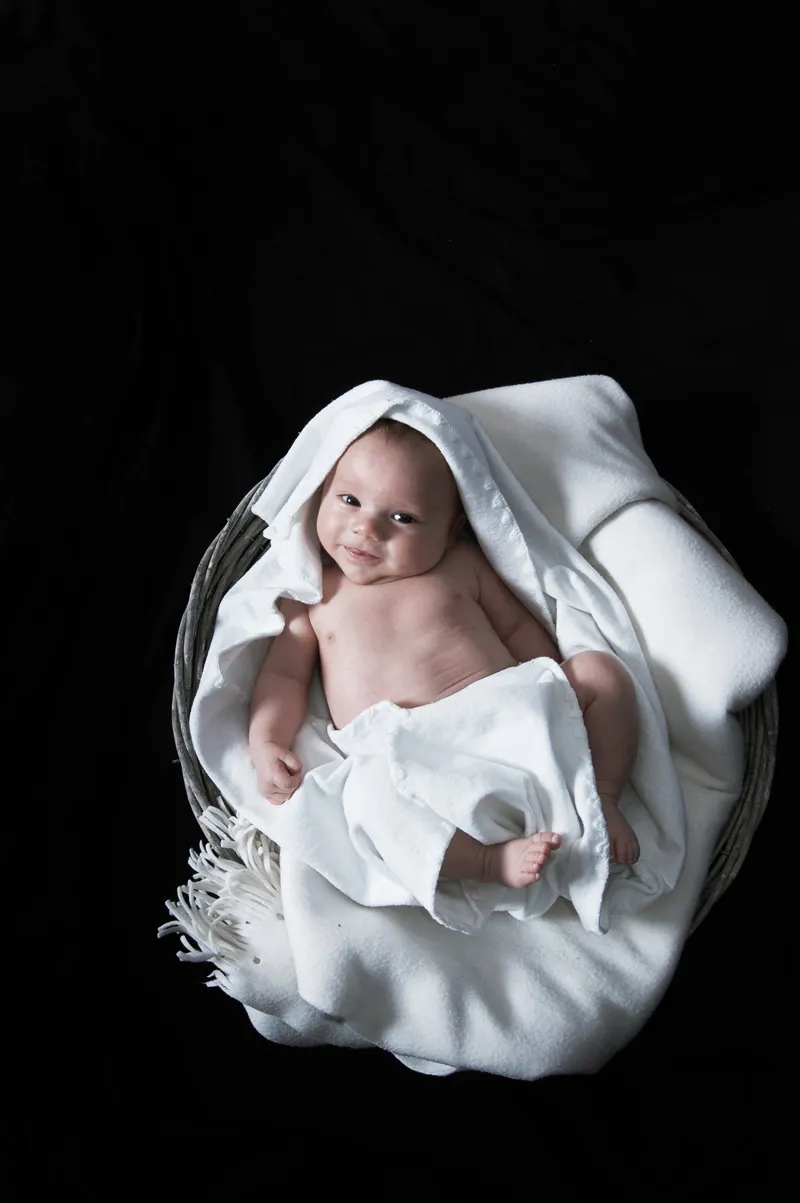
(Photo: Leonie Ebbert)
Series
Those who have the choice are spoiled for choice
I don't always manage to choose "the best" photo. I'm undecided, have several favorites and absolutely can't bring myself to throw out one of the remaining photos from the preselection in order to get to the finish line through the process of elimination. Especially when it comes to photos of my son, every single photo seems too valuable to me to be lost forever in the mass of archived images.
(Photo: Jens Brüggemann)
I found the solution in the frequent use of the photos as a series. Instead of emailing two, three or four similar photos to relatives, I now lay out the best similar photos into a series (often they are real character studies), which I then send (as just one file). In this way, none of the valuable pictures are lost and instead of boredom, joy arises from the often amusing picture stories that are told in this way.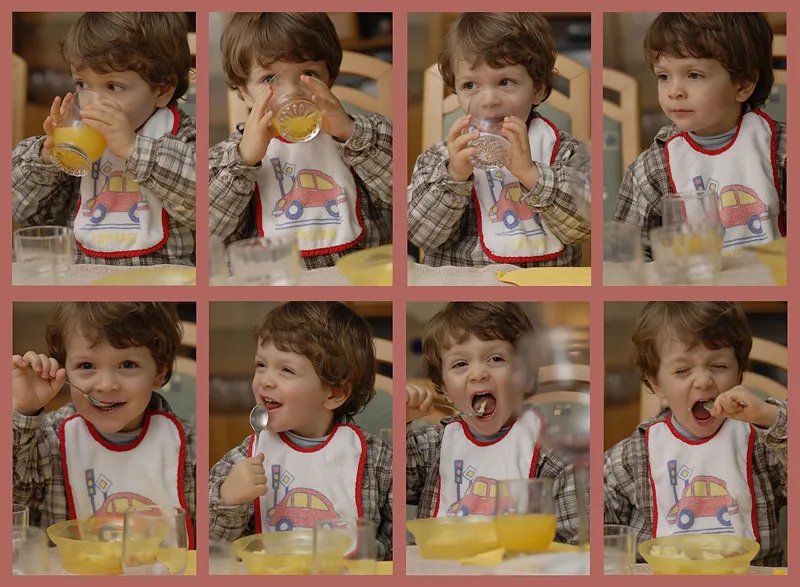
(Photo: Jens Brüggemann)
Of course, other types of series are also conceivable in which, for example, the chronological sequence of some action of the child is told. Such as sports series, for example, perhaps even shot with continuous shooting, where you get motion studies. Or you can lay out series by putting together different photos from different shoots that all fit the same theme, for example "son riding a bike" or "daughter playing with dolls", etc. No matter what you choose, series are always a welcome change in the presentation of children's photos.
Series are like short stories from the lives of our loved ones.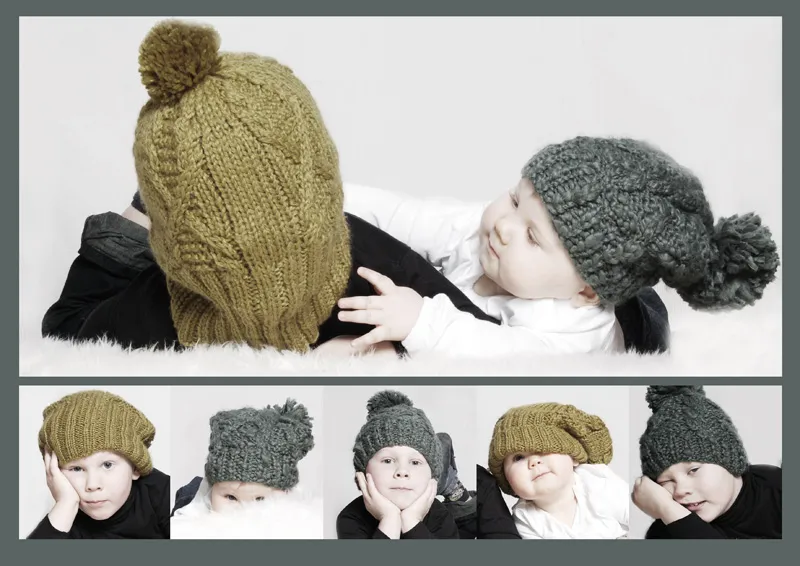
(Photo: Leonie Ebbert)
Color harmonies
Many photos have an effect on the viewer - and they don't really know why. Is it the perspective? The captivating gaze of the model? The expressive pose? The lighting? The composition? The detail? Or everything together?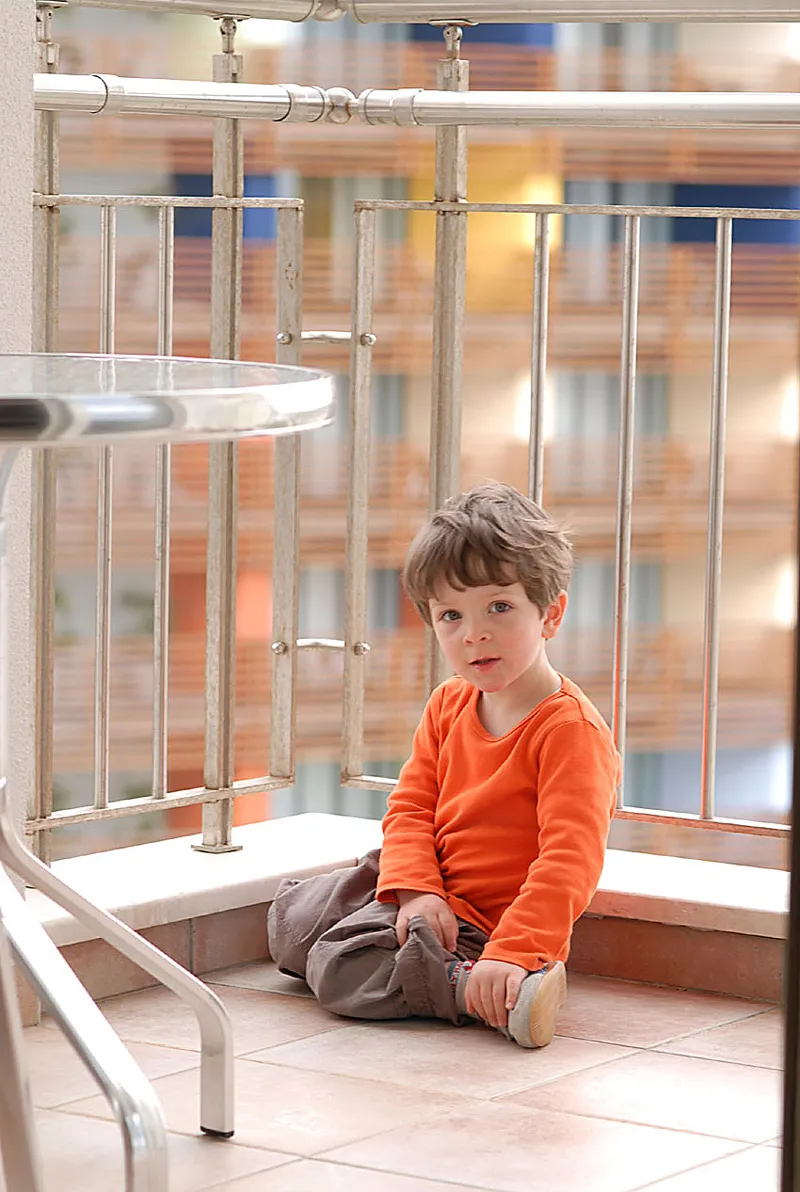
(Photo: Jens Brüggemann)
What is common practice in fashion photography, namely the harmonious interplay of the colors of the textiles used, also applies to all other areas of photography and therefore also to children's photography. Consequently, when I photograph parents with their child in my studio, I always ask them to bring as wide a selection of different textiles as possible so that I can coordinate the colors of the garments.
(Photo: Jens Brüggemann)
The photographer who took the following photo even regularly goes so far as to ask everyone involved in the photo to bring white clothing to the photo shoot. Together with the soft lighting and an equally white background, this results in very harmonious, beautiful portraits of the whole family.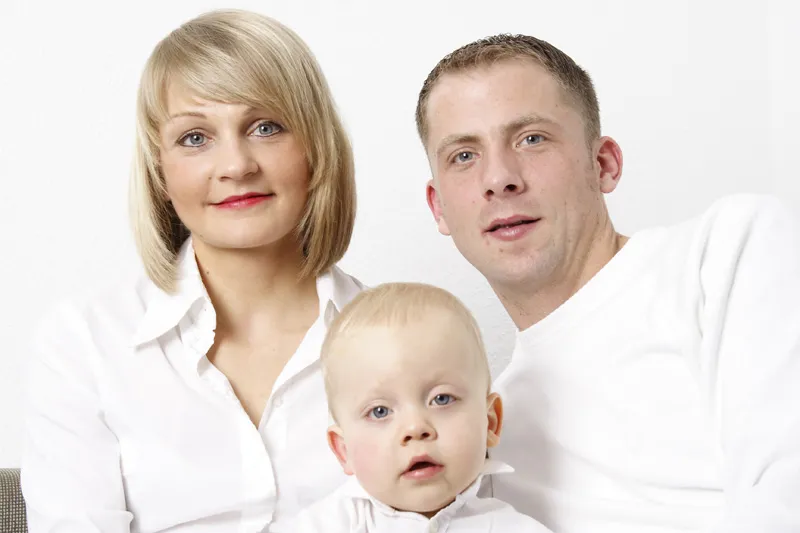
(Photo: Elli Bezensek)
The monochrome character can be further enhanced by reducing the color saturation either completely or only for certain colors in the image processing. The necklace and toy in the following photo were deliberately left "colorful" to add a colorful accent to the otherwise almost monochrome overall impression.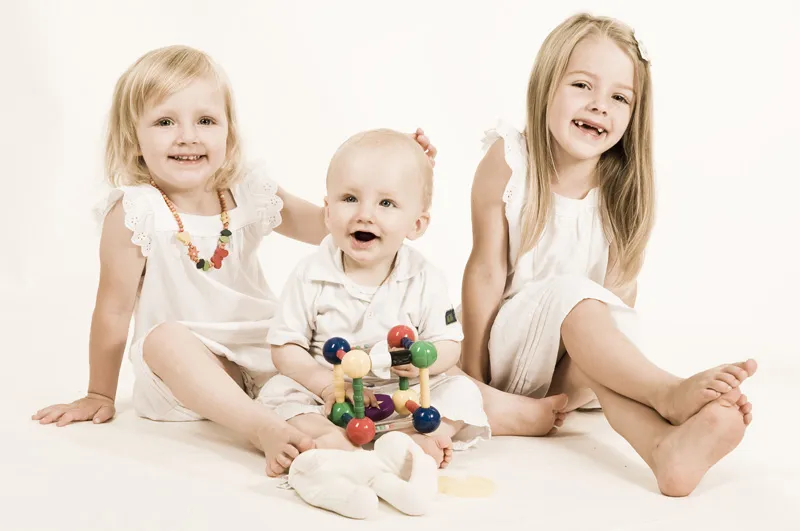
(Photo: Elli Bezensek)
A photo is effective not only, but also because colors are not randomly thrown together, but have been deliberately coordinated by the photographer. However, you are not always prepared for all eventualities, especially when taking photos "on location" on a family outing. But you still have to consciously "look" in order to recognize such a harmonious interplay of colors in order to then select the image section accordingly (to exclude disturbing colors) and press the shutter release. This photo essentially consists of the colors green and yellow as well as the neutral non-colors black and grey. (Photo: Jens Brüggemann)
A good photographer doesn't think long about what to photograph and how. He simply "sees" the motifs - and then photographs them. At the time I took the photo, I didn't realize why I liked the motif of my son eating. It wasn't until much later that I realized one of the reasons, probably the most important one: the harmonious interplay of the colors of the sweater, vegetables, bib and (freshly squeezed) orange juice.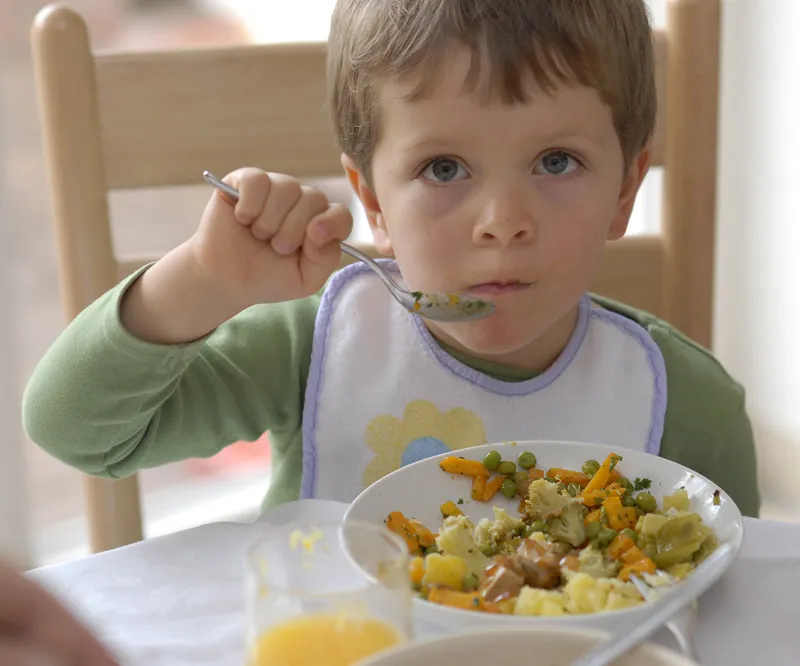
(Photo: Jens Brüggemann)
The renunciation of "colorful" is also what makes this beautiful portrait of a Ugandan girl so special. The reduction of the colors used to earthy brown through clever cropping brings us closer to the continent of Africa.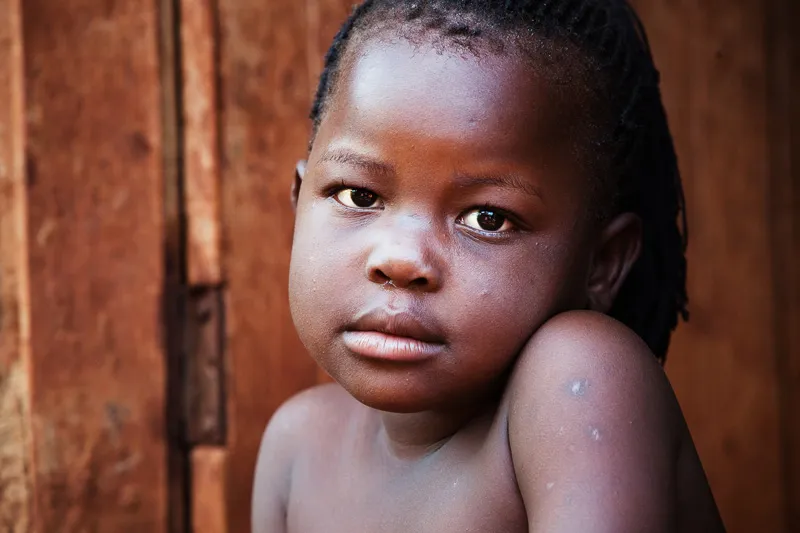
(Photo: Radmila Kerl)
But it doesn't always have to be color harmonies that are used in the composition of the picture, because it can also be "colorful" and "garish". The decisive factor, however, is that the photographer pays attention to the interplay of colors when composing the image section, i.e. consciously designs and uses them.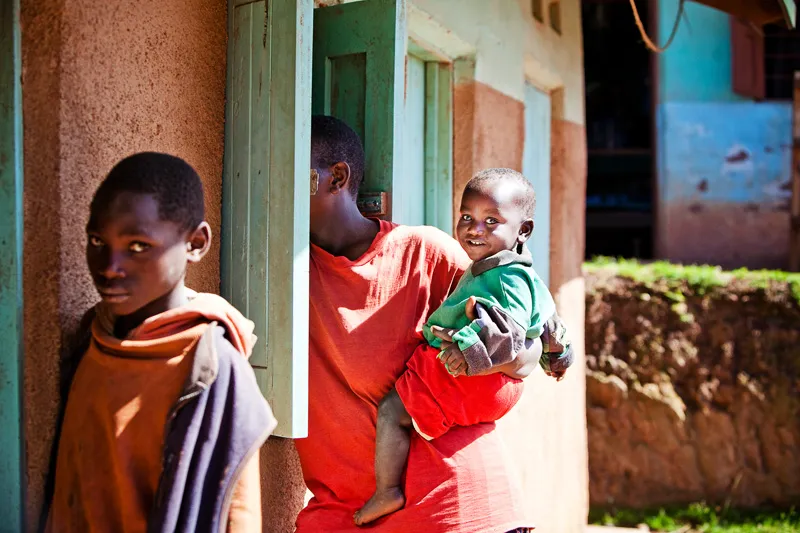
(Photo: Radmila Kerl)
The use of bright colors makes particular sense when photographing children, as it is an expression of joie de vivre and light-heartedness. Children running and romping through lush green grass while holding a ball in their hands should be wearing colorful clothes!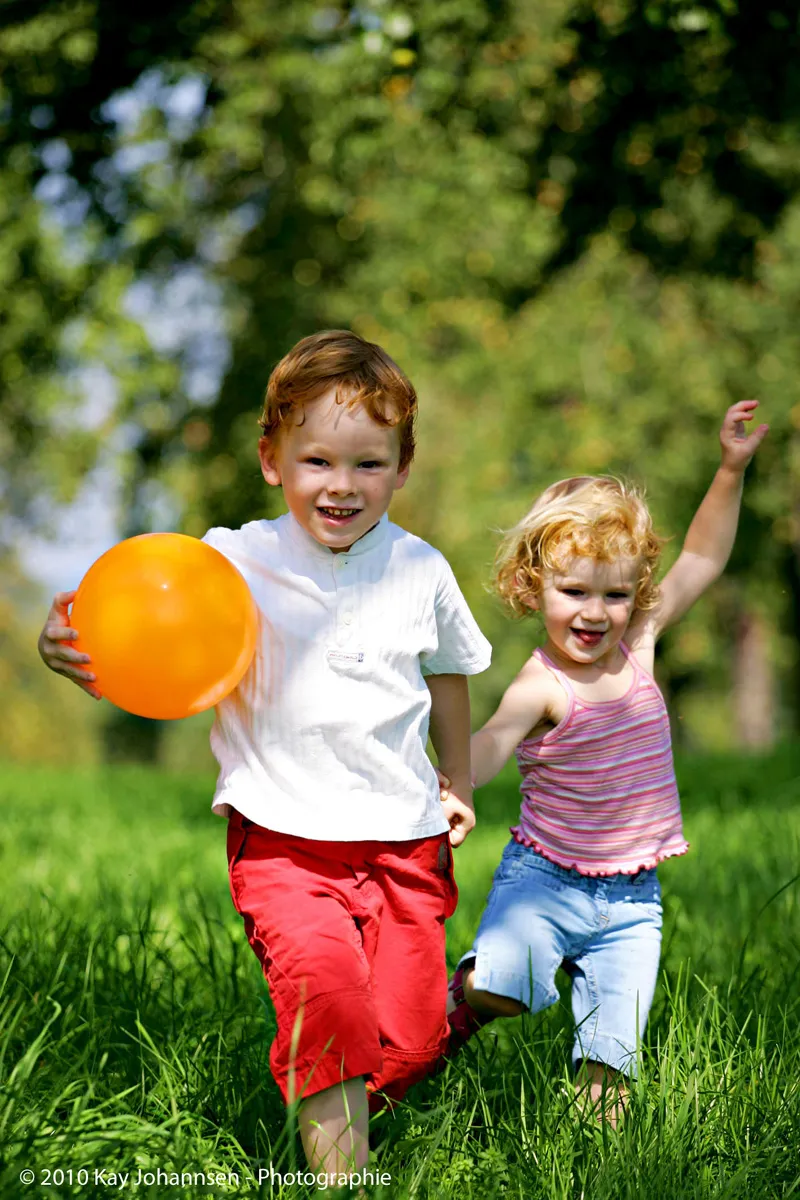
(Photo: Kay Johannsen)
To illustrate this, imagine the cheerful photo above with only gray-black or uniform-blue clothes...
But even if the little ones' clothes can generally be colorful: there are designs that are less suitable for photo shoots, such as shirts, sweaters or shirts with motifs of cartoon characters.
These distract from the child in the later photo, especially when it comes to colorful faces or logos of, for example, "Bob the Builder", "Winnie the Pooh", "Superman", "Stephanie" or "Sportacus" from Lazy Town, "The Wild Bunch", etc.
Solid colors or designs with small patterns are better (more photogenic).
So in future, pay more attention to the colors that appear in the later photo, both in terms of the young models' clothing and the props and backgrounds used! This way you can contribute a lot to the success of your photo.
"Set design
The "set design" goes in a similar direction. This refers to the deliberate composition of all objects appearing in the photo, including the model (in our case, the child to be photographed) and the clothing, before the photo is taken. This includes the colors of the selected clothing and props, but does not stop there.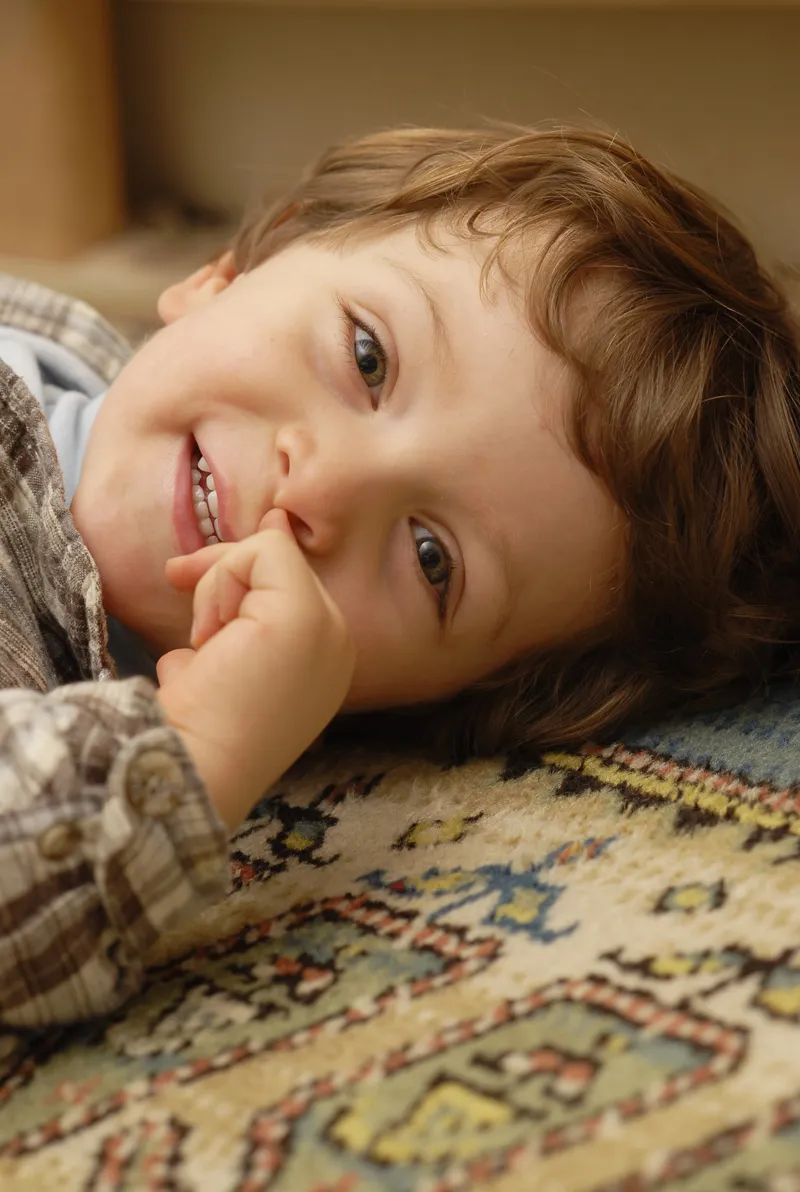
(Photo: Jens Brüggemann)
It also means that in posed photos, everything that appears in the photo is deliberately selected (usually to match each other). Color aspects play just as important a role as questions about the meaning and purpose of the objects in both the foreground and background. Questions such as "Does object XY in the background support the image statement, or does what the object represents contradict the image idea?" play a role here. This is advertising photography at its best!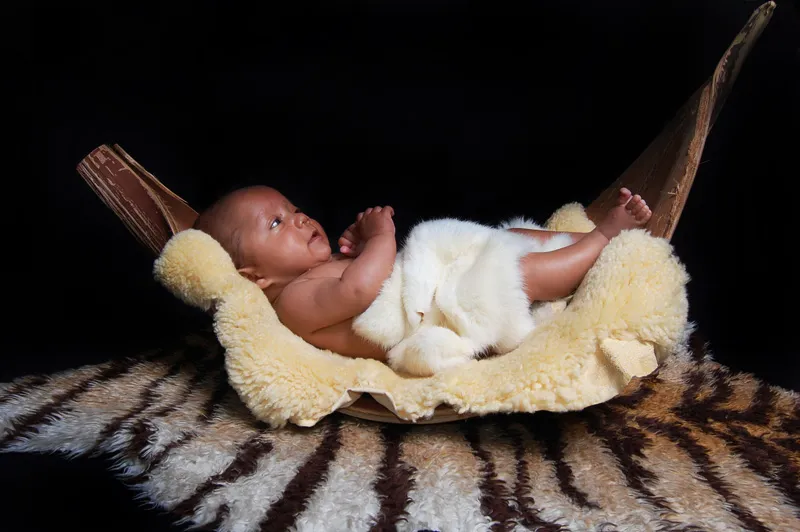
(Photo: Leonie Ebbert)
For snapshots and photos taken on location, where the photographer cannot or may not influence the background of the picture, he or she is required to block out anything unpleasant by choosing the right perspective and the right framing. Simply ask yourself what supports the message of the picture and what detracts or distracts from it.
This photo illustrates the loneliness of the goalkeeper at a soccer match. The little man stands almost lost in his big "box". Photographing the action around him, i.e. the threat of an opposing attack or the cheering spectators, would not have provided any more information than was already made clear; on the contrary, it would have distracted from the message of the picture.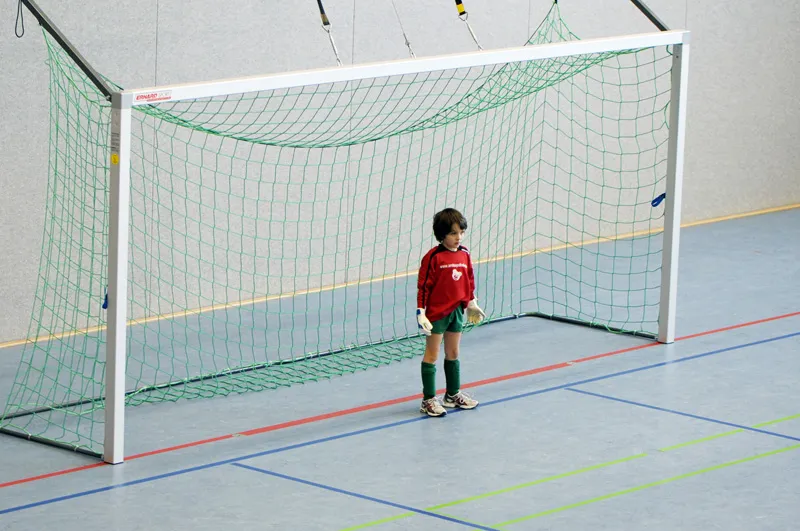
(Photo: Jens Brüggemann)


